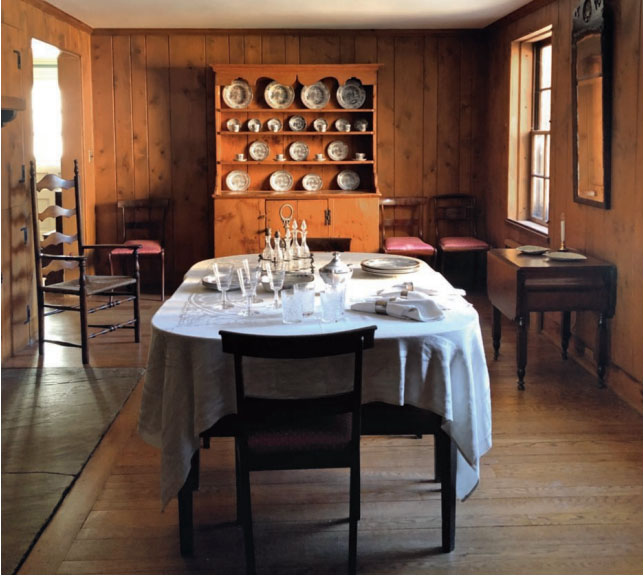
How Herman Melville worked from home
The novelist found nautical inspiration in this modest farmhouse far from the sea, where he wrote Moby-Dick, its whale inspired by the snowy curves of Mount Greylock
In 2020, many of us have were forced to carve out a little workspace in our domestic environments, as Covid pushed us out of the office environment. Since then many have become acustomed to a hybrid or entirely in-the-cloud approach to working.
But hunkered down at our home desks in 2020, many of us wondered how our creative heroes, both past and present, had faired under similar circumstances. Our book Life Meets Art first published that year of lockdown, and subsequently reprinted, is filled with wildly productive - and often beautiful - domestic settings that inspired and played host to many of the world's most accomplished creatives through the ages.
Within these pages, readers gain incredible access to some of the most fascinating homes belonging to some of the most creative people in the world. The houses of talented people in the spheres of art, design, fashion, literature, music, and film, feature in this publication, from Victor Hugo to Victor Horta; Frida Kahlo to George Frideric Handel; Le Corbusier to Lee Miller.
Some places stand as testaments to the fantastic wealth created by their creative successes, while others, such as Herman Melville’s house, underscore the disparity between the fortune he found in his lifetime and the exulted position his books hold in literature today.
“Drawing on his private affliction, frustration, and inspiration, not to mention his unique experience as a seaman, Melville wrote what was to become one of the most revered novels in American history: Moby-Dick; or, The Whale,” the book explains.

“He penned several other novels, short stories, and poems, but had a relatively unappreciated career, ending up as a full-time Customs House inspector in New York. From 1850 to 1863, Melville and his family lived at Arrowhead—their home and farm in Pittsfield, Massachusetts, in the Berkshires—which he named after Mohican relics he found while plowing its fields. The yellow clapboard farmhouse was home to Melville, his wife, Elizabeth, their four children, and other family members. Melville’s escape from the tumult was his second-floor study, with its dark wood desk and views of the Berkshires.”
That view might be about 100 miles from America’s Atlantic shores, yet it still provided the writer with stimulus for his most famous aquatic creation. “Here he wrote Moby-Dick, its whale inspired by the snow-covered curves of Mount Greylock, as well as The Confidence-Man: His Masquerade, Israel Potter: His Fifty Years in Exile, and several short stories.
"He used the spare, simple house, with its wood-paneled walls and sense of New England asceticism interrupted only by lovely dressers, clocks, beds, and china, as a subject of many of his works. He described its ‘grand central chimney’ in the story I and My Chimney, and its beautiful surroundings in Israel Potter: ‘In fine clear June days, the bloom of these mountains is beyond expression delightful,’ he wrote.”
For more sites of domestic inspiration and to find out how creative minds maximised their home environments to create some of the greatest art of our age order a copy of Life Meets Art here.